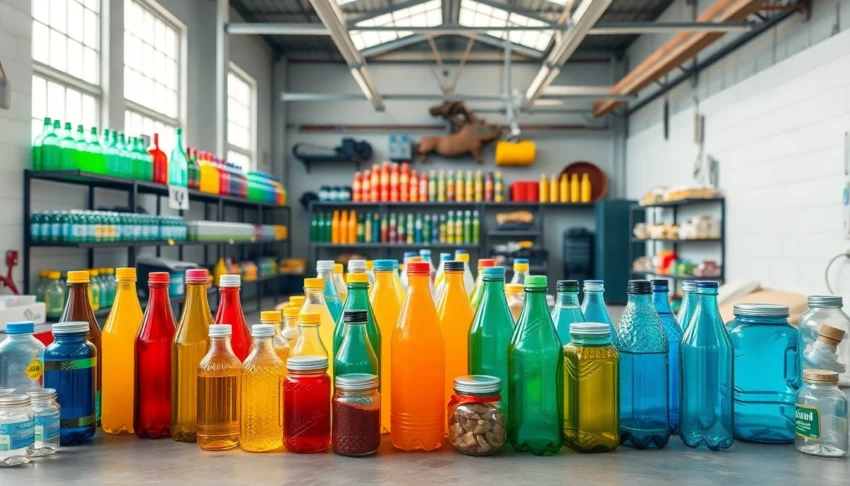Introduction to Plastik Sise: Types and Applications
Plastic bottles, or plastik şişe, have become a staple in packaging across numerous industries due to their versatility, cost-effectiveness, and lightweight nature. These containers are essential for beverages, pharmaceuticals, cosmetics, and household chemicals, serving as the primary vessel for a wide array of liquid and semi-liquid products. The variety of plastic bottles covers diverse manufacturing needs, ranging from single-use bottles to durable, reusable containers designed for multiple product cycles.
Understanding the different types of plastik sise is fundamental for manufacturers and consumers alike. Each type is engineered to meet specific application demands, balancing properties like durability, transparency, chemical resistance, and recyclability. The main categories include PET (polyethylene terephthalate), HDPE (high-density polyethylene), LDPE (low-density polyethylene), PVC (polyvinyl chloride), and polypropylene, each with unique characteristics tailored for specific uses.
Applications of plastik sise extend beyond consumer goods. Industries utilize these bottles for packaging chemicals, industrial lubricants, and even culinary ingredients, highlighting their adaptability. The growing demand is driven by increasing urbanization, health consciousness, and a focus on sustainability, which prompts continuous innovation in design and manufacturing processes.
Manufacturing Processes for Plastik Sise and Their Quality Standards
Material Selection and Sustainability Considerations
Selecting the right raw material is crucial for producing high-quality plastik sise. Most manufacturers prioritize polyethylene and PET due to their favorable properties—lightweight, chemical resistance, and affordability. However, sustainability is an increasingly prominent factor, prompting a shift toward recyclable and biodegradable plastics. Recycled materials, such as rPET, are now being integrated into production workflows to reduce environmental impact and meet regulatory standards.
Production Techniques and Equipment
Injection molding and blow molding are the primary processes for manufacturing plastic bottles. Injection molding involves injecting molten plastic into a mold to create preforms, which are subsequently blown into bottles in a secondary step. Blow molding, particularly stretch blow molding, is favored for producing high-volume, lightweight bottles with consistent wall thickness and structural integrity. Advanced machinery ensures precision, automation, and efficiency, which directly influence durability and appearance.
Ensuring Compliance with Safety and Quality Regulations
Quality standards such as ISO 9001 and certifications for food contact safety (e.g., FDA approval, EU Food Contact Compliance) are critical benchmarks. Manufacturers implement rigorous testing protocols—barrier properties, impact resistance, and chemical stability—to guarantee consumer safety. Regular audits and adherence to environmental regulations further enhance product reliability and brand reputation.
Design Tips and Customization for Plastik Sise and Labels
Innovative Design Trends in Plastic Bottle Packaging
Modern plastik sise design emphasizes sustainability, ergonomics, and brand differentiation. Techniques like lightweighting reduce material use, while molded-in features such as ergonomic grips improve user experience. Transparency and matte finishes are trending for visual appeal, providing clear product visibility and premium aesthetics. Additionally, incorporating innovative shapes and sizes can differentiate brands on crowded shelves.
Branding & Labeling Strategies for Maximum Impact
The visual identity of a product starts with the label. Innovative labeling strategies include sleeve labels, shrink sleeves, and embedded embossing, all designed to enhance brand recognition. Using eco-friendly inks and materials aligns branding with sustainability goals. Effective labeling not only communicates product benefits but also adheres to regulatory info, ingredients, and usage instructions, fostering consumer trust.
Cost-Effective Customization Methods
Custom manufacturing options, such as in-mold labeling (IML), provide high-quality branding with minimal additional costs for small production runs. Digital printing allows for rapid design changes and personalized labels. Investing in modular molds and scalable production systems optimizes costs, enabling brands to launch new designs quickly and economically.
Effective Marketing and Distribution of Plastik Sise Products
Target Audience and Market Segmentation
Successful marketing strategies focus on identifying target demographics for different plastik sise products. B2C markets emphasize convenience, aesthetics, and health, targeting consumers in food, beverages, and personal care. B2B markets, such as industrial and chemical sectors, prioritize durability, chemical resistance, and cost-efficiency. Segmenting markets geographically also helps tailor distribution channels and marketing messages effectively.
Channel Strategies for Plastic Bottle Distribution
Distribution channels include direct sales to large manufacturers, wholesaler networks, retail outlets, and online platforms. Establishing robust logistics is vital for timely delivery, especially for perishable goods. Partnerships with established distributors ensure broader reach and reduce logistical challenges. Digital platforms also facilitate customized orders, real-time inventory updates, and streamlined communication.
Promotional Tactics to Boost Sales and Brand Awareness
Marketing strategies incorporate trade shows, digital campaigns, and technical seminars to showcase product features. Demonstrating eco-friendly initiatives, such as recycled materials, enhances brand reputation. Offering sample packs, volume discounts, and co-branding opportunities attract new clients and foster loyalty. Leveraging social media and content marketing educates consumers about product benefits and sustainability efforts.
Performance Measurement and Future Opportunities in Plastik Sise Industry
Key Metrics for Evaluating Success
Tracking sales volume, market share, customer satisfaction, and return rates helps evaluate performance. Monitoring production efficiency—such as cycle times and material waste—identifies areas for optimization. Sustainability metrics, including recycled content percentage and carbon footprint, are increasingly important for brand positioning.
Innovations and Sustainability in Plastic Bottle Manufacturing
Emerging innovations include biodegradable plastics, multi-layer barrier bottles for extended shelf life, and smart bottles with embedded sensors for tracking product freshness. Promoting circular economies through improved recycling processes and designing bottles optimized for recyclability is vital for environmental compliance and public perception.
Emerging Markets and Expansion Strategies
New markets in developing regions, driven by urbanization and rising disposable incomes, present significant growth opportunities. Strategic expansion involves localized manufacturing, adapting designs to regional preferences, and establishing local supply chains. Collaborations with local distributors and participation in regional trade shows accelerate market entry and brand recognition.
